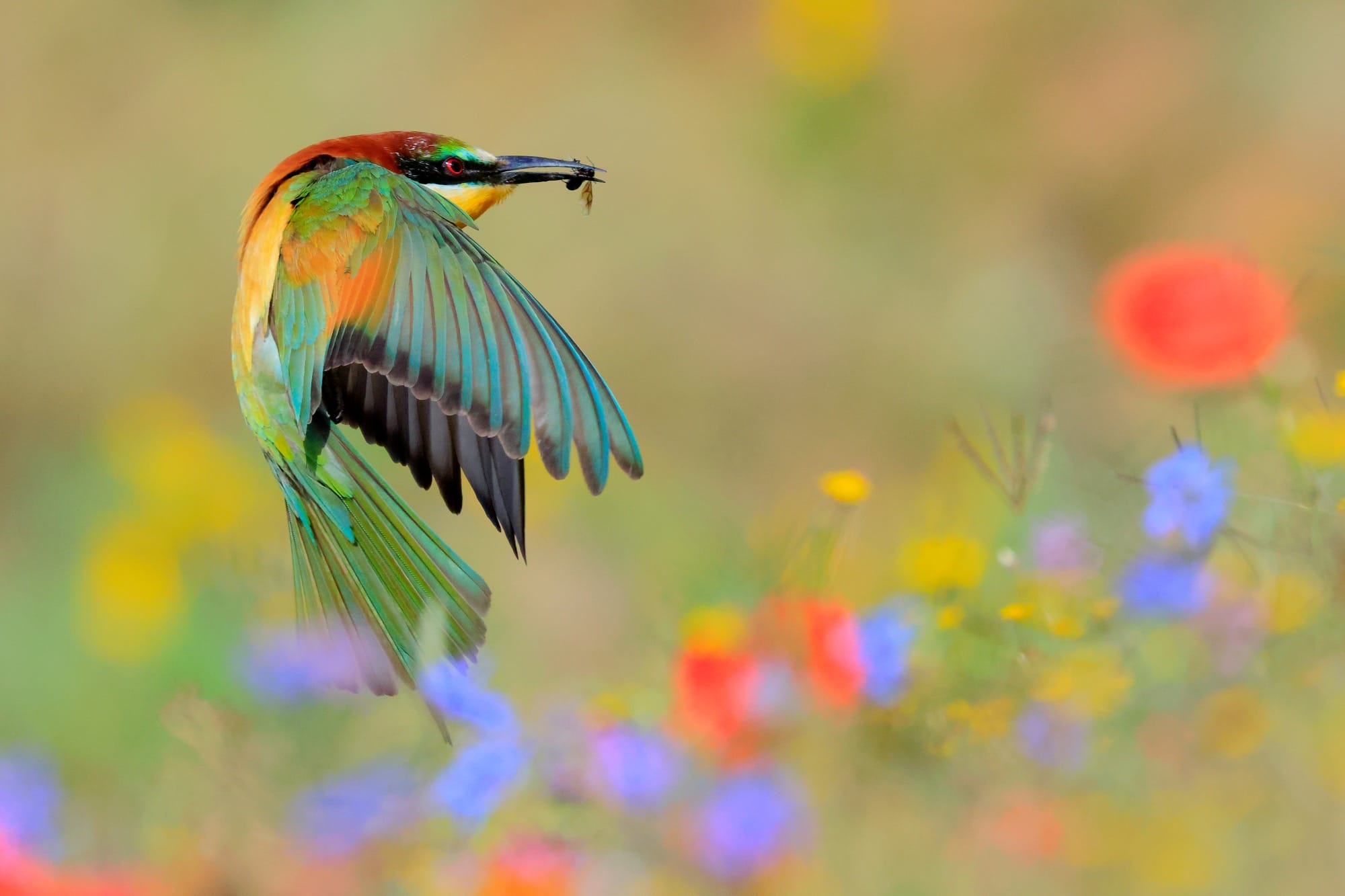This post was originally published on Colossal
A striking silhouette of two fighting stag beetles takes the top prize in the 6th annual Close-Up Photographer of the Year contest (previously), capping a group of category winners and finalists that showcase an array of natural phenomena in astonishing detail.
A jury of 25 experts, comprising scientists, editors, naturalists, journalists, and photographers, narrowed down 100 images from more than 11,000 entries. Photographers in 61 countries submitted photos of a wide range of animals and environments, capturing dramatic behaviors and fascinating habitats.

Among many favorites, Yong Miao’s beautiful shot of a damselfly perched on a stone near a waterfall won the Insects category, Barry Webb’s capture of an ear-pick fungus topped the Fungi & Slime Moulds category, and Gabriel Jensen’s portrait of a fish in the toothy mouth of a predator took the top spot in the Underwater category.
The competition highlights not only incredible images but also the fascinating science and stories behind them. “Summer brings calm seas to South Florida where a dedicated community of shore diving photographers head out nearly every day to survey the world’s third largest coral reef for interesting wildlife,” Jensen says.
Her friends spotted a lizard fish (Synodus foetens) grappling with a large doctorfish. She adds, “After a few minutes of struggle, the doctorfish managed to escape. This image now sits on my desk at work, serving as a reminder that even on tough days, “Everything’s going to be A-OK.”
CUPOTY co-founder Tracy Calder says, “Close-up photography is a celebration of curiosity,” also sharing that the winning entries are “a true testament to the artistry of everyone involved, as well as an invitation to look, marvel at, and honour the world around us.” See all the top photos in the competition’s online gallery.







Do stories and artists like this matter to you? Become a Colossal Member today and support independent arts publishing for as little as $7 per month. The article The Winners of This Annual Competition Show Nature Is Ready for Its Close-Up appeared first on Colossal.





0 Comments